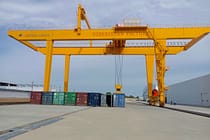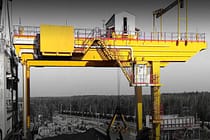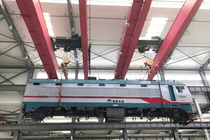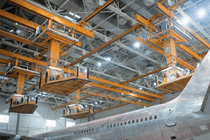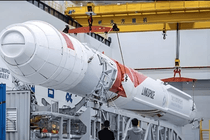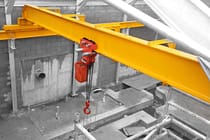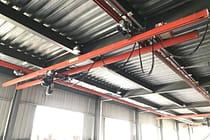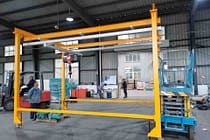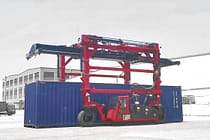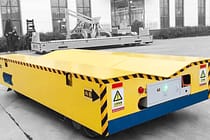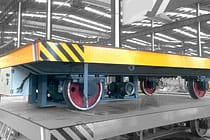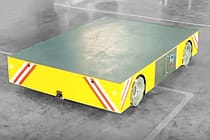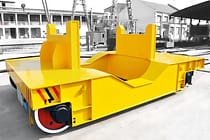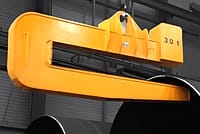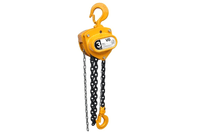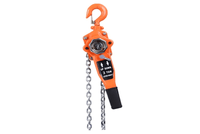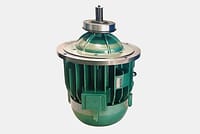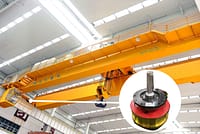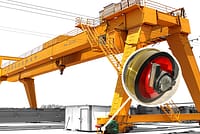Travelling Gantry Crane: Accidents And Prevention
Travelling gantry cranes are powerful industrial machines used for lifting and moving heavy loads in various settings, such as construction sites, ports, and warehouses. These cranes provide flexibility and efficiency in material handling operations, but they also pose certain risks if not operated and maintained properly. This article explores the common accidents associated with travelling gantry cranes and highlights preventive measures to ensure a safe working environment.
Types Of Accidents Involving Travelling Gantry Cranes
Accidents involving travelling gantry cranes can have severe consequences, including injuries, fatalities, and damage to property. Understanding the types of accidents that can occur is crucial in developing effective preventive strategies. The following are the most common types of accidents associated with travelling gantry cranes:
Overturning Accidents
Overturning accidents happen when a gantry crane becomes unstable and tips over. This can occur due to various factors, such as exceeding the crane’s load capacity, uneven ground conditions, or improper operation. Overturning accidents often result in major damage to the crane and surrounding structures, posing significant safety hazards.
Collision Accidents
Collision accidents involve the gantry crane colliding with other objects or vehicles. These accidents can occur during crane movement or while transporting loads. Poor visibility, inadequate signaling, or lack of communication between operators and other personnel can contribute to collision accidents. They can cause injuries, property damage, and disrupt workflow.
Load Dropping Accidents
Load dropping accidents happen when the load being lifted by the gantry crane unexpectedly falls. This can occur due to factors like improper rigging, equipment failure, or human error. Load dropping accidents pose a significant risk to workers in the vicinity and can result in severe injuries or fatalities.
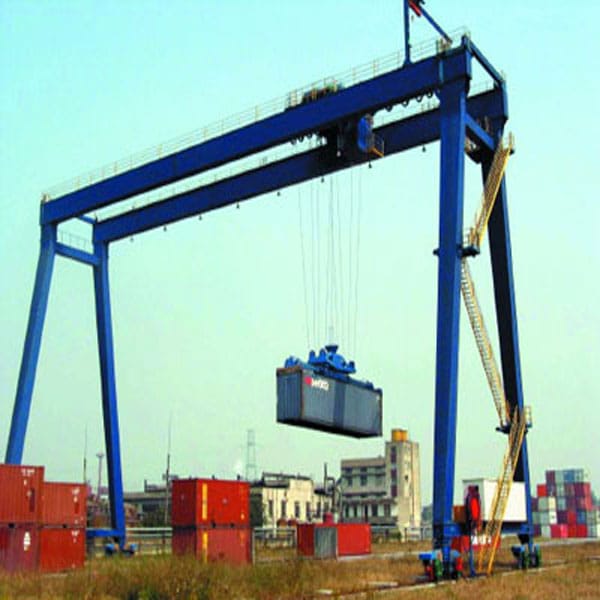
Causes Of Accidents
To prevent accidents involving travelling gantry cranes, it is essential to understand their underlying causes. Several factors contribute to these accidents, including:
- Lack of operator training and experience: Insufficient training and experience of crane operators can lead to accidents. Operators need to be familiar with the crane’s specifications, operating procedures, and safety protocols. Inadequate knowledge of load handling techniques and poor decision-making skills can increase the likelihood of accidents.
- Mechanical failure: Mechanical failure of critical components, such as hoists, brakes, or structural elements, can result in accidents. Regular maintenance and inspections are crucial to identify and address potential mechanical issues before they cause accidents.
- Improper maintenance: Neglecting proper maintenance of travelling gantry cranes can compromise their safety and reliability. Lack of lubrication, worn-out parts, or loose connections can lead to failures during crane operation, increasing the risk of accidents.
Prevention Measures For Travelling Gantry Crane Accidents
To mitigate the risks associated with travelling gantry cranes, several preventive measures should be implemented:
- Regular inspections and maintenance: Regular inspections of the crane’s structure, components, and electrical systems are vital to identify any signs of wear, damage, or malfunction. Maintenance activities, including lubrication, adjustment, and repair, should be carried out promptly to ensure the crane’s optimal performance and safety.
- Proper training and certification for operators: Operators should undergo comprehensive training programs that cover crane operation techniques, crane maintenance, load capacity awareness, safety protocols, and emergency procedures. Certification should be provided to operators who demonstrate proficiency in operating the crane safely.
- Load capacity awareness and adherence: Operators must have a clear understanding of the crane’s load capacity and adhere to it strictly. Overloading the crane can lead to accidents and compromise the structural integrity of the crane.
- Safety devices and equipment: Installing safety devices such as limit switches, anti-collision systems, and overload indicators can enhance the safety of travelling gantry cranes. These devices provide warnings or automatically stop the crane’s operation when certain conditions are met, preventing accidents.
- Emergency response planning: Developing and implementing an emergency response plan specific to travelling gantry crane operations is crucial. The plan should include procedures for evacuating personnel, reporting accidents, and providing first aid. Regular drills and training sessions should be conducted to ensure that all workers are familiar with the emergency response protocols.
Safety Tips For Working Around Travelling Gantry Cranes
- Familiarize Yourself with the Crane: Understand the crane’s operating procedures, controls, and warning signals. Read the manufacturer’s instructions and follow them carefully.
- Wear Personal Protective Equipment (PPE): Always wear the appropriate PPE, including a hard hat, safety glasses, high-visibility clothing, steel-toed boots, and any other required protective gear.
- Maintain Safe Distance: Keep a safe distance from the crane while it is in operation. Stay outside the designated work area and avoid standing or walking under the crane’s load or boom.
- Communicate Effectively: Establish clear communication channels with the crane operator and other workers involved in the operation. Use hand signals, radios, or other approved methods to communicate effectively.
- Observe Warning Signs and Signals: Pay attention to warning signs, lights, and audible signals indicating the crane’s movement or potential hazards. Follow the instructions provided by these signals.
- Secure Loads Properly: Ensure that loads are properly secured before lifting or moving them. Use appropriate rigging techniques and inspect all lifting equipment regularly for any signs of damage or wear.
- Be Aware of Surroundings: Stay alert and aware of your surroundings at all times. Watch out for other moving equipment, overhead obstructions, or uneven ground that may pose a risk.
- Report Safety Concerns: If you notice any safety concerns or potential hazards related to the crane or its operation, report them immediately to your supervisor or the appropriate authority.
- Receive Proper Training: Ensure that you have received adequate training on working around gantry cranes, including safe operating procedures, hazard, and emergency response protocols.
FAQs
- What are some common signs of mechanical failure in a gantry crane?
Signs of mechanical failure may include unusual noises, jerky movements, or irregularities in the crane’s performance. Any such signs should be reported immediately for inspection and repair. - How often should a travelling gantry crane be inspected?
Travelling gantry cranes should undergo regular inspections as per manufacturer guidelines, typically at least once every 12 months. - Can operator errors be prevented through training?
Yes, proper operator training is crucial in preventing accidents caused by operator errors. Training programs should cover crane operation, load management, safety protocols, and emergency procedures. - Are there any specific regulations governing the use of travelling gantry cranes?
Yes, different countries have specific regulations and standards governing the use of travelling gantry cranes. It is essential to comply with these regulations to ensure safe operation.
Send Your Inquiry
- Email: sales@hndfcrane.com
- WhatsApp: +86 191 3738 6654
- Telegram: +86 191 3738 6654
- Tel: +86-373-581 8299
- Fax: +86-373-215 7000
- Add: Changnao Industrial District, Xinxiang City, Henan Province, China
 WeChat
WeChat








